Birds
Media
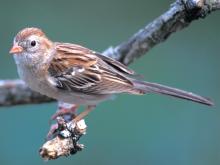
Species Types
Scientific Name
Spizella pusilla
Description
Field sparrows live in weedy, brushy fields, glades, and overgrown pastures. They have a gray head with rusty side stripes on the crown, and a rusty eyeline and cheek. The bill and legs are pink.
Media

Species Types
Scientific Name
Junco hyemalis
Description
Dark-eyed juncos, or "snowbirds" as they are widely known, are sparrows. Juncos are abundant throughout Missouri during the winter. What many people are not aware of is that there are two color forms of juncos that occur here.
Media
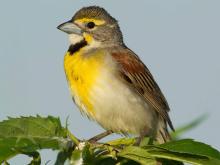
Species Types
Scientific Name
Spiza americana
Description
Like a cross between a meadowlark and a sparrow, the dickcissel is common in prairies, pastures, and fields. Atop fences and tall weeds, it sings its buzzy “dick-dick-dickcissel” into the bright sunshine.
Media
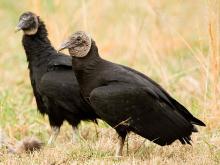
Species Types
Scientific Name
Coragyps atratus
Description
Although turkey vultures are much more common in Missouri, black vultures are expanding their range northward, and sightings of them are increasing. Note their black head, shorter tail, and (seen from below) a white patch near the ends of the wings.
Media
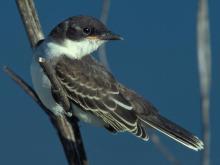
Species Types
Scientific Name
Tyrannus tyrannus
Description
The eastern kingbird’s spirited territorial defense, tidy, black-and-white plumage, and distinctive, fluttery flight have long captured the attention and admiration of people.
Media
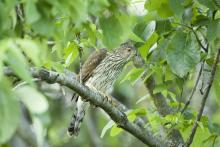
Species Types
Scientific Name
Accipiter cooperii
Description
Cooper's hawks have short, rounded wings and long, narrow, rudderlike tails. They are frequently seen foraging along hedgerows and brush-entangled fencerows.
See Also







Media

Species Types
Scientific Name
Hemaris diffinis
Description
The snowberry clearwing is a moth that confuses people because it looks like a bumblebee and flies like a hummingbird!
Media

Species Types
Scientific Name
Hyles lineata
Description
The white-lined sphinx moth sometimes confuses people because it flies, hovers, and eats from flowers like a hummingbird. The adults often fly during daylight hours as well as in the night and are often found at lights.
Media

Species Types
Scientific Name
Darapsa myron
Description
The Virginia creeper sphinx moth is common in woods and brushy areas and comes to lights at night. The larvae eat Virginia creeper and grape leaves.
Media

Species Types
Scientific Name
Perimyotis subflavus (formerly Pipistrellus subflavus)
Description
Tri-colored bats, formerly called eastern pipistrelles, are relatively small and look pale yellowish or pale reddish brown. The main hairs are dark gray at the base, broadly banded with yellowish brown, and tipped with dark brown.
Media

Species Types
Scientific Name
Myotis grisescens
Description
Gray myotises are difficult to distinguish from other mouse-eared bats. A key identifying feature of the gray myotis is that its wing is attached to the ankle and not at the base of the toes. It’s an endangered species.
Media

Species Types
Scientific Name
Myotis lucifugus
Description
The little brown myotis (little brown bat) is one of our most common bats, but populations are declining. White-nose syndrome has taken a heavy toll in northeastern states. This species is now listed as vulnerable across its range.
Media

Species Types
Scientific Name
Myotis sodalis
Description
The Indiana myotis, or Indiana bat, summers along streams and rivers in north Missouri, raising its young under the bark of certain trees. It is an endangered species.
About Birds in Missouri
About 350 species of birds are likely to be seen in Missouri, though nearly 400 have been recorded within our borders. Most people know a bird when they see one — it has feathers, wings, and a bill. Birds are warm-blooded, and most species can fly. Many migrate hundreds or thousands of miles. Birds lay hard-shelled eggs (often in a nest), and the parents care for the young. Many communicate with songs and calls.





















